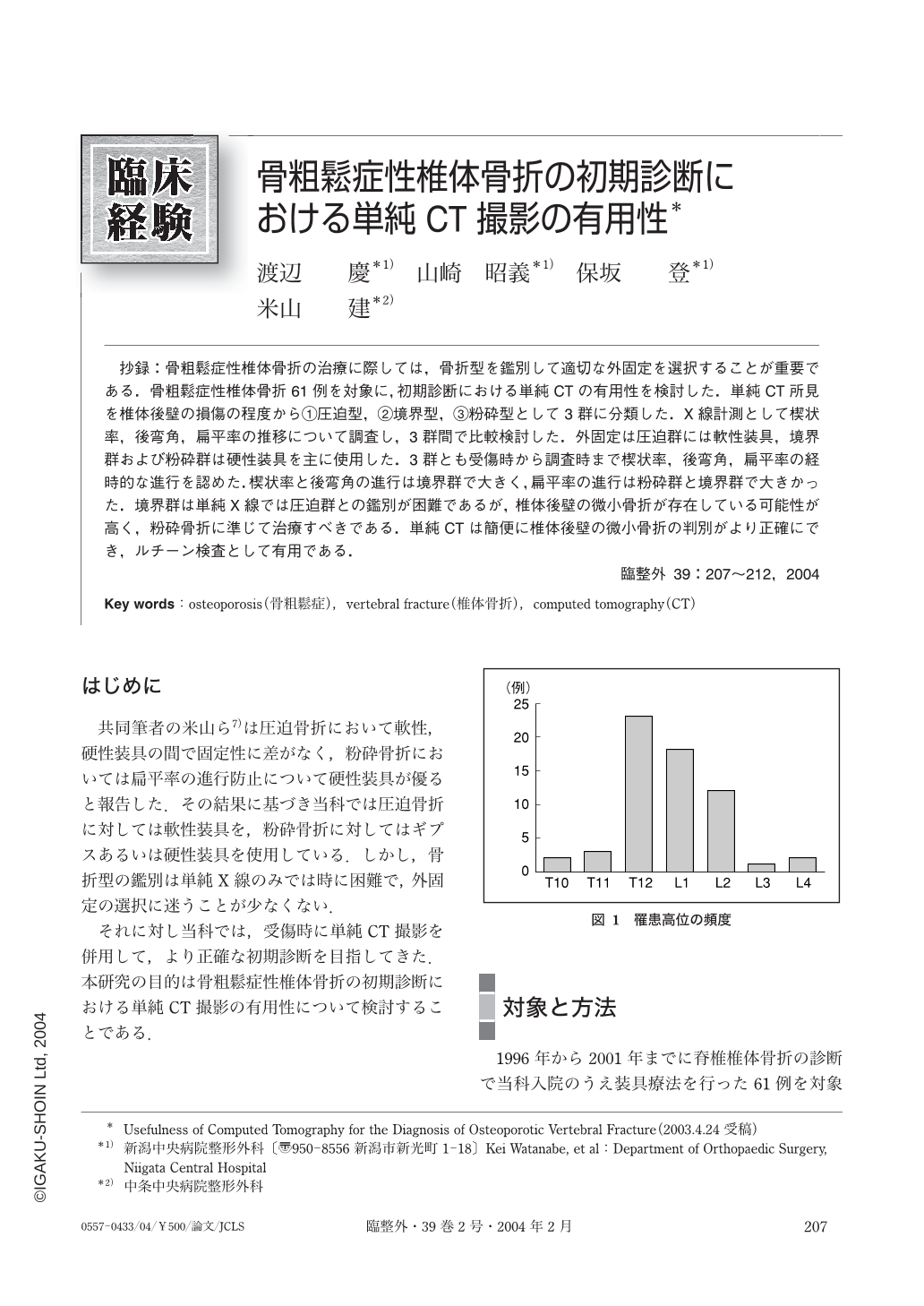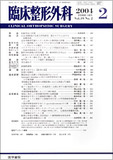Japanese
English
- 有料閲覧
- Abstract 文献概要
- 1ページ目 Look Inside
抄録:骨粗鬆症性椎体骨折の治療に際しては,骨折型を鑑別して適切な外固定を選択することが重要である.骨粗鬆症性椎体骨折61例を対象に,初期診断における単純CTの有用性を検討した.単純CT所見を椎体後壁の損傷の程度から①圧迫型,②境界型,③粉砕型として3群に分類した.X線計測として楔状率,後弯角,扁平率の推移について調査し,3群間で比較検討した.外固定は圧迫群には軟性装具,境界群および粉砕群は硬性装具を主に使用した.3群とも受傷時から調査時まで楔状率,後弯角,扁平率の経時的な進行を認めた.楔状率と後弯角の進行は境界群で大きく,扁平率の進行は粉砕群と境界群で大きかった.境界群は単純X線では圧迫群との鑑別が困難であるが,椎体後壁の微小骨折が存在している可能性が高く,粉砕骨折に準じて治療すべきである.単純CTは簡便に椎体後壁の微小骨折の判別がより正確にでき,ルチーン検査として有用である.
Computed tomography (CT) is recommended for routine use in the diagnosis of osteoporotic vertebral fractures. An evaluation of the CT scans and complementary radiographic studies of 61 patients with osteoporotic vertebral fracture are reported. Spinal fractures were divided into three categories by the CT scans:compression fractures, burst fractures, border-line burst fractures that demonstrated irregularity of posterior wall of vertebral body. The border-line burst fracture group demonstrated the most progression of vertebral wedge deformity and segmental kyphosis. The burst fracture and border-line brust fracture group demonstrated collapse of vertebral segmental height. Although it is difficult to differentiate between the compression fracture group and border-line burst fracture group by plain X-ray films, there is strong possibility that micro-fracture of posterior wall of vertebral body is present in the border-line burst fracture group. Therefore, the border-line burst fracture group should be treated as burst fracture. CT is recommended for routine use in the diagnosis whether micro-fracture of posterior wall is present.

Copyright © 2004, Igaku-Shoin Ltd. All rights reserved.


